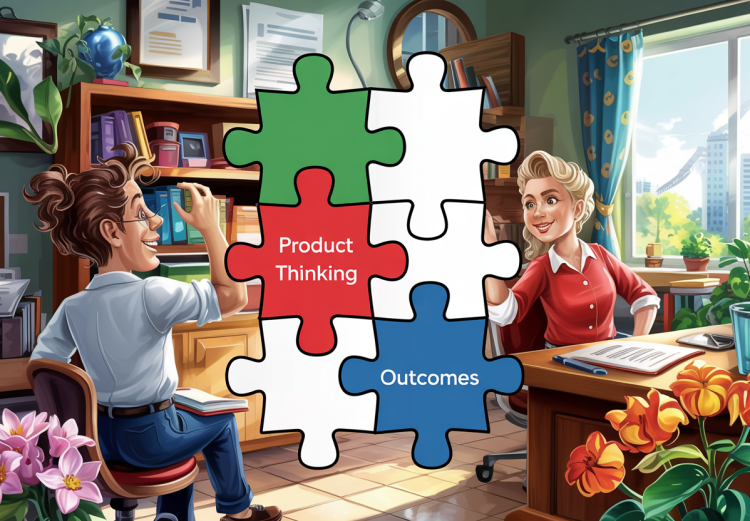Scrum is everywhere. Scrum boards. Dailies. Retros. Sprints. And yet—so many teams feel stuck. They’re delivering regularly, but not making real progress.
The problem? Scrum improves how you build. But it doesn’t tell you what to build—or why.
If your product team feels efficient but ineffective, you’re not alone. Let’s talk about what Scrum gets right, what it misses, and what it actually takes to build great products.
You need more than a Delivery Engine
Scrum Improves How You Build—Not What You Build
Scrum helps teams work in smaller chunks, adapt quickly, and ship continuously. But Scrum doesn’t give you a roadmap. It doesn’t tell you what your users actually need. It doesn’t define product-market fit. You can do Scrum the right way and still just build the wrong thing—faster.
Process Without Purpose Is Just Motion
You can hit all your sprint goals and still miss the point. Teams get busy executing the backlog… but no one steps back to ask:
- Are we solving the right problem?
- Are we moving the right metric?
That’s not agility. That’s activity without direction.
Scrum Can Mask Bigger Problems If You’re Not Careful
A well-oiled process can hide deeper issues:
- A lack of product vision
- Weak customer understanding
- No clear success metrics
If you’re not careful, Scrum becomes a high-velocity treadmill. You’re running hard—without moving forward.
What Scrum Teams Often Miss
Scrum helps you ship, but not necessarily succeed. Here’s what often gets left behind.
Clarity on the Problem They’re Solving
Too many teams jump into sprints without clearly understanding the user problem. Without this, you're building solutions in search of a problem—hoping something sticks.
A Clear, Testable Product Vision
Scrum helps with iteration, but vision tells you where to go. Without a shared vision:
- Backlogs get bloated
- Priorities shift constantly
- Teams lose focus
Vision aligns the team—and gives context to every decision.
Outcome-Based Thinking Instead of Feature Focus
Agile often defaults to shipping features, but real progress is about outcomes:
- Did it improve user behavior?
- Did it reduce friction?
- Did it grow the business?
Measuring output is easy. Measuring impact takes discipline.
What Product Success Actually Takes
Want to build something that matters? Scrum alone won’t get you there.
Deep Customer Understanding
Success starts with empathy. Talk to users. Observe them. Understand what drives them. You can’t build great products without knowing who you’re building for.
Strategic Focus That Transcends the Sprint
Sprints are tactical. Strategy is directional. Teams need clarity on:
- Why this problem matters
- What success looks like
- What trade-offs are worth it
This focus prevents constant course-correcting mid-sprint.
Accountability for Impact, Not Just Output
Your job isn’t to ship features—it’s to change something for the user or the business. Hold teams accountable to:
- User behavior changes
- Real-world adoption
- Measurable results
That’s how you build credibility—and better products.
Go Beyond Scrum to Build What Matters
Marry Scrum Delivery with Product Discovery Practices
Before building, validate. Try:
- Problem interviews
- Prototyping
- Experiments
- Surveys
Build with evidence—not assumptions.
Create Feedback Loops That Drive Learning
Scrum’s strength is iteration. But iteration is meaningless without feedback. Build tight loops with:
- Users
- Data
- Stakeholders
Feedback is your source of truth. Make it constant.
Empower Teams to Own the Outcome
Don't hand teams a list of features. Hand them a problem—and the context. When teams own the outcome, they:
- Think critically
- Test ideas
- Make smarter trade-offs
This is where real innovation starts.
Follow the Value—Not a Framework
Scrum is powerful, but it’s not magic. It helps you build better, but it can’t tell you what matters—or why it matters.
If your product team wants to stop spinning and start winning:
- Think beyond sprints
- Obsess over outcomes
- Connect everything to real-world impact
Because Scrum alone won’t save you. But clear thinking, curiosity, and value-driven decisions just might.


